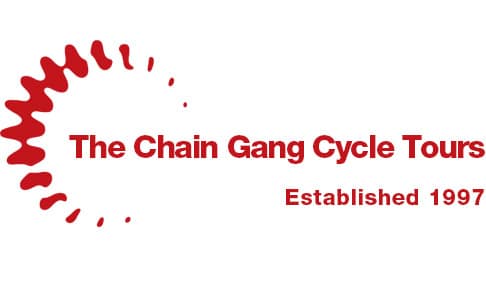Learning about cheese. From the very beginning!

I was a bit surprised that the lady behind the desk didn’t know more about local producers of this famous cheese, and even more surprised when she claimed she’d never heard of cheese being produced near Rochefort.
We eventually managed to work out that the cheese in question was Roquefort, a mere 500 Km away in the Massif Central. I’d like to think we’ve moved on, and now I’ve become a huge cheese expert. OK, that’s not actually true, but the point is that we see a lot of regional cheeses on Chain Gang tours, some are quite interesting, and some are amazing. And still none of them is Roquefort.

Bordeaux & Provence
OK, let’s get the easy ones out of the way first, Bordeaux and Provence. Neither of them produce much in the way of cheese, and that’s that. Ironically one of the best cheese ‘chariots’ we’re offered is at La Taverne restaurant in Uzes on our Provence tour. But it’s full of wonderful cheeses from everywhere else.
Burgundy

I’d go along with that. It has a distinctive orange colour on account of being ‘smear ripened’.
A lot of the soft cheeses on our list are periodically washed in a salt solution, or brine, which makes them amenable to certain classes of bacteria – Camembert, for example. Some cheeses are additionally smeared with bacteria cultures, often involving matured versions of the same cheese, to encourage bacterial growth.
Époisses is washed with marc de Bourgogne, the spirit distilled from the skins leftover from the wine-making process. It was awarded AOC status in 1991, is unpasteurised, and was a favourite of Napoléon. And me.
Tuscany & Umbria

Pecorino cheese is a hard cheese made from sheep milk, and Pecorino Toscano has enjoyed AOC status since 1996. But if its provenance you’re after, this cheese, and the process of making it, was described by Pliny the Elder in his encyclopædic Naturalis Historia. Published in 79 AD! Now that’s a cheese with history!

It can be eaten within 20 days, but as you can see here it can also be matured for up to 4 months. That’s how I like it, and this photo shows Pecorino cheese being matured in Montepulciano, courtesy of Chris Yates.
Devon

On our Devon tour, in Tavistock we typically have a picnic (once in a churchyard, memorably interrupted by a funeral!), and we buy cheese in maybe the best cheese shop I’ve ever seen. I always look for a Quickes cheddar – and also my favourite cheddar of all, the Black Bomber, but it ain’t from Devon.

Nor is Yarg, it’s from neighbouring Cornwall, and notable for being wrapped in nettle leaves. But when we’re in Tavistock, Cornwall is about 4 miles away, so that counts, doesn’t it? It’s a semi-hard cheese made with milk from Friesan cows, and wrapped in nettle leaves before maturing, so the rind is edible, if slightly mouldy.
Frankly there isn’t that much to be said for Yarg, in my opinion, but I like it because its wrapped in nettle leaves, and that’s cool.
Dordogne

I can only imagine they’ve never tasted any other type of cheese. It’s a goat cheese, it’s small, and you can eat the rind, and therefore lends itself to picnics and salads. Apart from that, it’s just a goat cheese, man. But they’re proud of it around Rocamadour, no question about that.
The Loire Valley

Unpasteurised, like all the best cheeses, and made from goat milk. Saint-Maure de Touraine enjoys AOC status, as distinct from the mass-produced and readily available Saint-Maure. The way to tell the difference is that the straw in the AOC cheese carries an AOC marker, and a producer number. What’s the reason for the straw? It’s just there to keep the rolled cheese together.
Where is Saint-Maure on the ordinary – amazing spectrum? The straw gives it novelty value, and that’s about it.

Normandy

They have 4 appellation cheeses, Camembert, France’s best-selling cheese (by miles), Pont L’Eveque, Livarot and Neufchatel. Four years ago, with the London 2012 Olympics on the horizon, I tried to organise the Normandy cheeses into a medal podium. I managed to overlook the oldest AOC cheese in Normandy, Neufchatel. Don’t worry, you can safely overlook it too.

If you want to read how I ranked the other three, have a look here.
Alternatively, for a more balanced and well-informed view, click here.
And what’s missing?
Roquefort, obviously, styled by some in France as the King of cheeses. Me? I’d give that label to Comté, also missing from our list. It’s so nearly in both Burgundy and Alsace, but it ain’t! It’s from Franche Comté in the East of France, neighbouring both Burgundy and Alsace.

This, for me, is the King of French cheeses. Almost as good as Cheddar!


